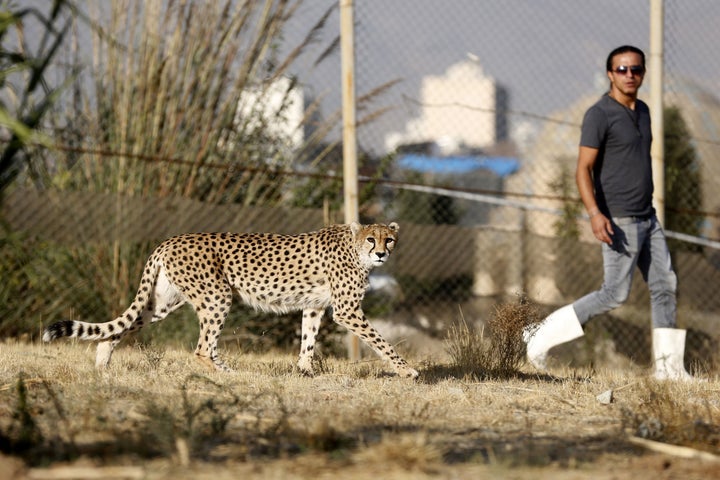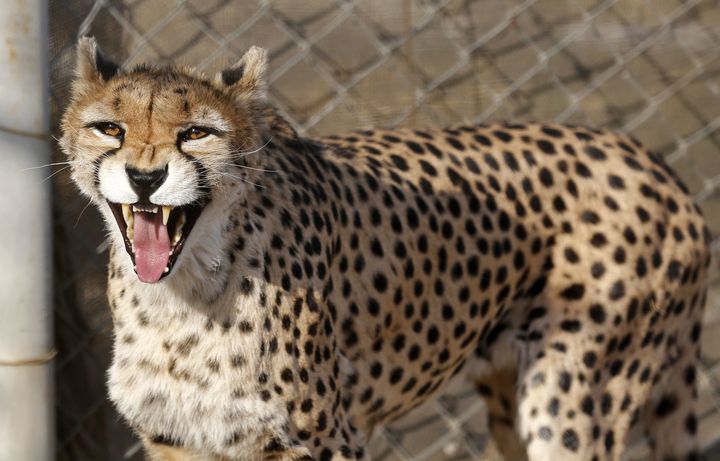The Asiatic cheetah could be headed one step closer to extinction after critical U.N. funding earmarked to protect the world’s “second-rarest cat” will dry up this later this month.
“Unless something is done within the next couple of years, it will not be possible to save the Asiatic cheetah,” Urs Breitenmoser, co-chair of the Cat Specialist Group, told The Observer last week. “It is now five minutes to midnight for the species. Soon it will be midnight ― and extinction.”
Once widespread in Asia, stalking vast swathes of the continent from the Middle East to eastern India, the Asiatic cheetah was almost wiped out in the 20th century by overhunting and habitat degradation, among other threats. Today, fewer than 50 individuals are believed to remain in the wild ― all of them in Iran — and that number continues to plummet each year.
Cars, poachers and local herders are currently the biggest threats facing the subspecies, according to conservationists.
“Farmers and their dogs kill them to protect their herds,” Hooman Jokar, managing director of Iran’s Asiatic cheetah conservation program, told Agence France Presse earlier this year.
Photographs show cheetahs as roadkill in Iran, run over on highways despite signs warning drivers to look out for the animal.

The situation may seem dire for the Asiatic cheetah, considered a critically endangered species by the International Union for Conservation of Nature, but conservationists say it could be a lot worse. If not for a conservation program launched by the Iranian government in 2001 with support from the U.N. Development Program aimed at protecting the animal and its habitat, the Asiatic cheetah would have “totally disappeared from Iran” by now, Jokar told the AFP.
The program helped to designate protected areas, establish a network of dozens of specially-trained park wardens and provide the cheetahs with sufficient natural prey.
Campaigns have also been launched to raise awareness about the animal’s plight, including putting images of the cheetah on the jerseys of the Iranian national soccer team for the 2014 World Cup.
Earlier this year, Iranian actress Hedieh Tehrani spearheaded a fundraising effort to help relocate farms so conflicts between farmers and cheetahs are reduced.
But the successful cheetah initiative now faces a major challenge in the looming funding shortfall.
The UNDP, which says it’s pumped some $800,000 into the program to date, will no longer support the initiative.
“Unfortunately, due to budget challenges, UNDP is unable to extend the project beyond [December 2017],” an agency spokesperson told The Observer.
Now, it’ll be up to Iran to continue running the program on its own.
But with a significant chunk of funding gone, experts worry about the fate of the Asiatic cheetah. Iranian officials said earlier this month that the program will have to be funded from the country’s “tight” Department of Environment budget, the Tehran Times reported.
In a letter published in the journal Nature earlier this month, conservationists Jamshid Parchizadeh and Samual Williams urged Iran “not to give up on cheetah conservation” and encouraged the global community to support efforts to save the imperiled subspecies.
“Bringing the Asiatic cheetah back from the brink of extinction will require close cooperation between governmental organizations, non-governmental organizations and grass-roots stakeholders. The government’s wholehearted support is crucial,” the conservationists wrote.
Asiatic and African cheetahs are the fastest land animals on the planet ― possibly even the speediest to have ever lived. The Asiatic cheetah has been isolated from its African cousins for at least 32,000 years, according to National Geographic. Genetically distinct, the Asiatic cheetah also differs slightly from its African counterparts in appearance. They have shorter legs and smaller heads, and boast more powerful necks and thicker coats.

